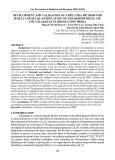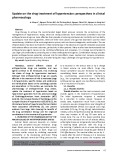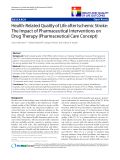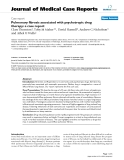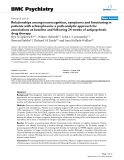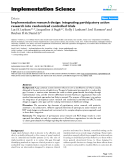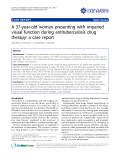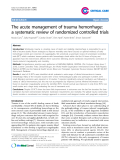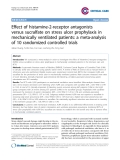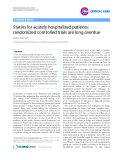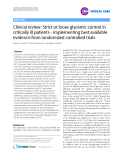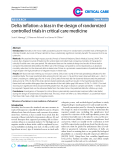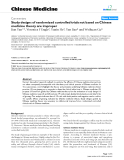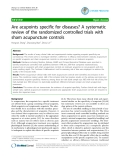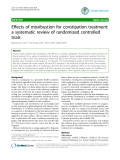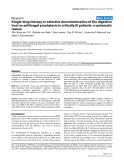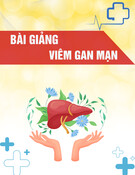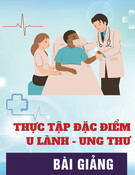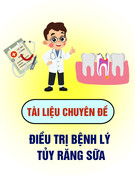
13
Journal of Medicine and Pharmacy, Volume 12, No.07/2022
Update on the drug treatment of hypertension: perspectives in clinical
pharmacology
Le Chuyen1*, Nguyen Thi Lan Nhi1, Do Thi Hong Diep1, Nguyen Thanh Tin1, Nguyen Le Hong Van1
(1) Department of Pharmacology, University of Medicine and Pharmacy, Hue University
Abstract
Drug therapy to achieve the recommended target blood pressure remains the cornerstone of the
management of hypertension. Today, there are strong evidences from randomized controlled trials that
antihypertensive drugs are more effective than placebo at reducing cardiovascular mortality and morbidity.
According to more recent guidelines, there are three main classes of drugs that have been used for initial
monotherapy: inhibitors of the renin-angiotensin system, calcium channel antagonists, and diuretics. The use
of beta blockers has been restricted for initial monotherapy in the absence of a specific indication associated
with adverse effects on some outcomes, particularly in older patients. Many studies have demonstrated that
antihypertensive agent classes can be combined effectively and nowadays, it is strongly recommended to
use single-pill combinations containing two or three antihypertensive agents. Combination therapy provides
greater antihypertensive potential, reduced risks for side effects, lower medical cost, increase compliance,
and promotes long-term adherence, this latter being the major challenge of drug therapy for hypertension.
Key words: hypertension, drug therapy.
Corresponding author: Le Chuyen, email: lechuyen@huemed-univ.edu.vn
Recieved: 23/9/2022; Accepted: 7/12/2022; Published: 30/12/2022
DOI: 10.34071/jmp.2022.7.2
Nowadays, several different classes of
antihypertensive drugs are available, and new
agents continue to be introduced, thus increasing
the choice of drugs for hypertension treatment.
Although most antihypertensive drugs are equally
effective in the treatment of mild to moderate (stage
1-2) hypertension, specific choices and preferences
are individualized based on the cardiology societies
and associations. In this section, we summarize the
pharmacology of antihypertensive drug classes,
update the treatment of hypertension based on
hypertension guidelines from the American College
of Cardiology/American Heart Association (ACC/
AHA) [1], the European Society of Cardiology and the
European Society of Hypertension (ESC/ESH) [2], the
Vietnamese Society of Hypertension/Vietnam Nation
Heart Association (VSH/VNHA) [3], and present
evidence from large trials showing the benefits of
the drug combination therapy and the single-pill
combinations in the treatment of hypertension.
1. OVERVIEW OF THE PHARMACOLOGY OF THE
MAJOR CLASSES OF ANTIHYPERTENSIVE DRUGS
Arterial blood pressure depends on cardiac
output and peripheral vascular resistance. Drugs
lower blood pressure by reducing cardiac output,
systemic vascular resistance, or both. Drugs can
decrease cardiac output by inhibiting myocardial
contractility or by decreasing ventricular filling
pressure. Reduced ventricular filling pressure due
to a decrease in the venous tone or by a change
in blood volume via renal effects. Drugs may
reduce peripheral vascular resistance by directly
vasodilating blood vessels in the periphery or
by counteracting vasoconstrictor mechanisms
(e.g., the sympathetic nervous system, the RAS).
Antihypertensive agents are classified according to
site or mechanism of action.
1.1. Diuretics
1.1.1. Thiazide diuretics
Thiazide diuretics: are the most commonly used
diuretic agents in the treatment of hypertension.
The initial hypotensive response is mediated
by a reduction in cardiac output. However, at
steady state, hypotension result from a decrease
in systemic vascular. Dosage forms and strengths of
hydrochlorothiazide (HTCZ): oral capsule (12.5 mg);
oral tablet (12.5 mg; 25 mg; 50 mg). Administration:
Initially, 12.5 to 25 mg PO once daily [4]. Maintenance
dose may increase to 50 mg PO once daily or
twiced daily. The use of the lowest possible dose
would further decrease the risk of adverse effects,
while higher doses are not generally more efficacious
in lowering blood pressure. Take this drug in
the morning, if patients are on a twice daily dosing
schedule, the second dose should be given before 6
PM. Effectiveness: The maximal effect occurs by 4 -
6 weeks after the start of therapy, so it is necessary
to wait enough time to assess the response and





